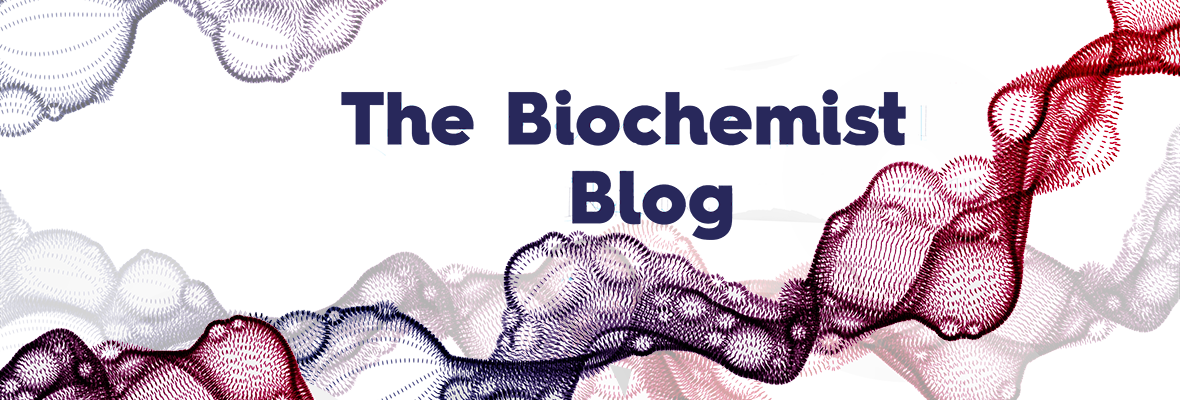by Lisa Strittmatter, University of Cambridge, UK
My motivation to do a PhD at the MRC Laboratory of Molecular Biology in Cambridge was driven by its place at the forefront of science. During my time here, I have come to realise how little I know about the origins of molecular biology. In 1957, the MRC institute was named ‘unit for Molecular Biology’. I decided it was high time to find out more and who better to narrate its history than its contemporary witnesses? Professor Sir John Meurig Thomas, on my supervisor’s suggestion, was happy to give a lecture and I was honoured to host such a well-known physical chemist. He has authored more than thousand scientific papers and numerous books. Naturally, I was impressed by the endless list of achievements on his CV, but what really struck me was his engagement in the popular education of science. This combination made him the ideal person to shed light on the origins of molecular biology.

What started with a few e-mails, quickly turned into a much-anticipated event. The atmosphere before the talk was a mixture of tension and excitement. Meurig Thomas and I were both on the nervous side, while Dr Richard Henderson, one of this years’ Nobel prize laureates in Chemistry, ready to give the introduction, was tremendously relaxed. He praised Meurig Thomas’ exceptional memory and teased him about having the second longest of the 30,000 entries in Who’s who. On a personal note, we learnt that Henderson’s very first introduction to his research field cryo-electron microscopy was thanks to Meurig Thomas.
Meurig Thomas took over the stage and started his lecture ‘Bragg, Perutz and Kendrew and the Origins of Molecular Biology’, proving to be a very eloquent speaker. He believes molecular biology is one of the most fascinating disciplines as it holds the key to life, to health, to disease. It all began in the hands of physicists, chemists and crystallographers.
The Braggs and the discovery of diffraction
The first milestone Meurig Thomas mentioned was the use of X-ray emission for diffraction by William Henry and William Lawrence Bragg, father and son. They were inspired by another physicist, Max van Laue, who was convinced of the wave nature of X-ray emission. Most of their ground-breaking work was done in 1913 before World War I put an end to the research. In only one year, they determined the arrangement of atoms in numerous salt crystals. Later, they expanded the work to look at the molecular arrangement of living things like cotton, hair, silk or wool. Their key contribution was the development of the X-ray diffractometer.

‘Bragg X-ray spectrometer, England, 1910-1926’ by Science Museum, London. Credit: Science Museum, London. CC BY
John Desmond Bernal, the great sage in Cambridge
JD Bernal, called ‘the sage’, as he supposedly knew everything, had the most charismatic voice according to Meurig Thomas and the right touch to inspire students. After training by WH Bragg, he discovered ten different methods to collect diffraction pattern from crystalline enzymes in his own laboratory. Dorothy Hodgkin, his PhD student and later one of the most influential crystallographers in Britain, described the atmosphere in his lab as “just magical”.
Max Perutz and John Kendrew follow their footsteps
Both Max Perutz and John Kendrew, personally known by Meurig Thomas, were drawn into the field by JD Bernal. “When Max Perutz was a student,” Meurig Thomas reflected, “he wanted to solve a great problem in biochemistry and said ‘one day, I left my home town Vienna to seek the great sage… The riddle of life is written in the structure of proteins and the only means whereby the structure could be elucidated was by X-ray crystallography.’”
Kendrew, who later founded the European Molecular Biology Organisation (EMBO), was the first one to consider computing power to speed up the calculations necessary to solve three-dimensional structures. Perutz, described as a life-long friend by Sir John, developed the heavy-atom methods which make it possible to solve the structure of larger molecules, as he finally did for haemoglobin.

Sir John really showed how the history of molecular biology is one that many scientists have contributed to. He had such wonderful first-hand stories, as he not only knew, but was friends with at least two of the ‘founding fathers’ of molecular biology. His narration very much focused on molecular structures as the key to the origin of molecular biology.
A second approach which considers information storage and transfer as the origin of molecular biology is often described by American scientists. In a future posts, I hope to take you on another tour through science history, so watch this space to see what which piece of history I will discover next.
About me
I am a PhD Student at the MRC Laboratory of Molecular Biology and the University of Cambridge. Alongside my joy to solve biochemical riddles in the lab, I am passionate about the history of science. I like to organise and participate in science outreach events, however, I am stepping onto new grounds by writing this blog post. It is a new and exciting way for me to discover the fascinating history of science and share it with a wider audience.



Great post! Already looking forward to the follow up!
LikeLike